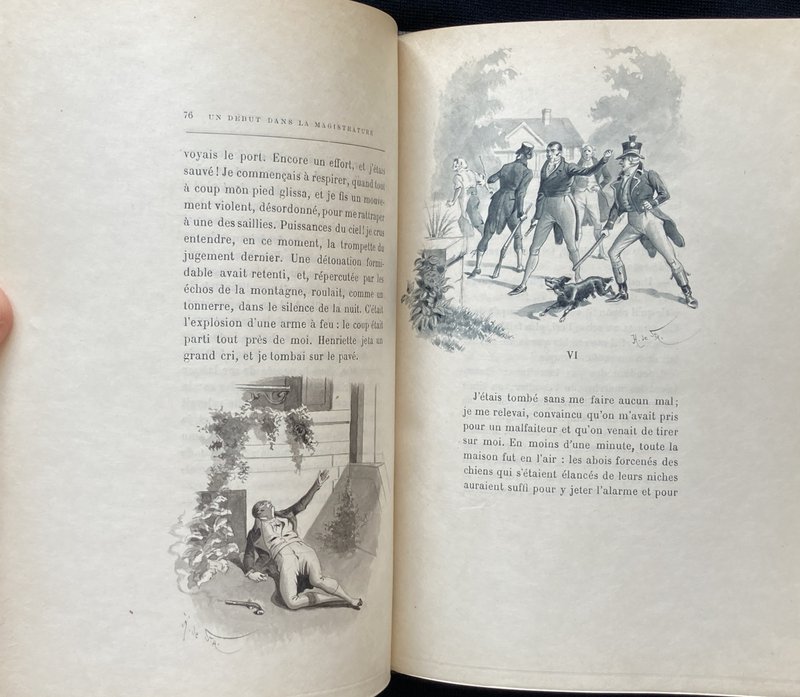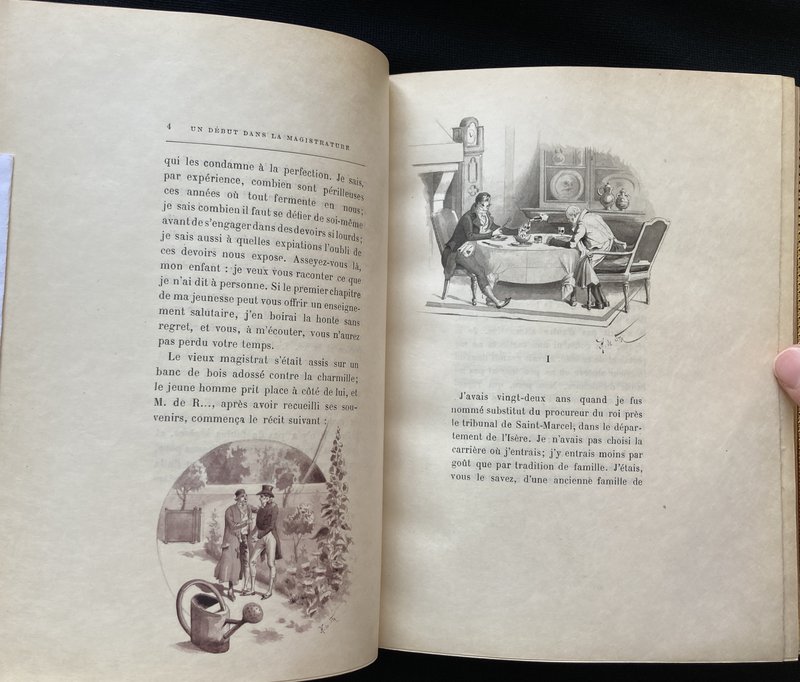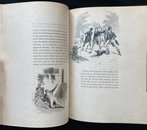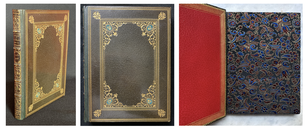Un Début dans la Magistrature: 24 watercolor originals

SANDEAU, Jules. Un Début dans la Magistrature.
Paris: Calmann Lévy, Éditeur, 1887.
(18 x 13.5 cm). 166 pp. First edition, Number 24 of 25 copies printed on Japon Vellum. Bound in full dark brown morocco extra gilt, boards tooled in gilt with floral ornaments at corners, full red doublures with gilt dentelles, patterned silk flyleaves, a.e.g., with original orange printed wrappers bound in. Invisibly rebacked. A lovely copy.
The binding is signed “P. Ruban”, no doubt the master bookbinder Pétrus Ruban (1851 - 1929), active in Paris 1879-1910. He was one of the most fashionable bookbinders at the turn of the century, binder for many of the greatest bibliophiles (Barthou, Beraldi, Borde, Baron de Claye, etc.), he was also a collector and produced a large number of bindings for his own library.
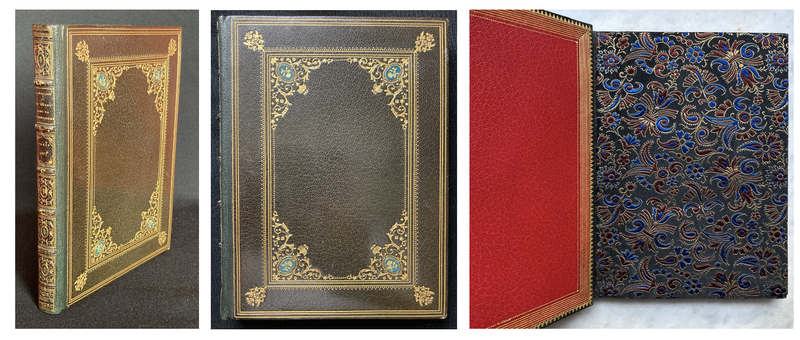
Description: Sandeau illustrated
With full-page watercolor drawing in blue and grisaille on the half-title signed “H de Sta” and 23 smaller watercolor vignettes as head- and tail-pieces in the text, each signed. Henri de Sta, was the nom de plume of Arsène-Henry de Saint-Alary (1846-1920), a prolific illustrator, caricaturist and children’s book author whose work appeared widely in Le Chat Noir, Le Paris Bouffon, Le Rire, Le Charivari, and others.
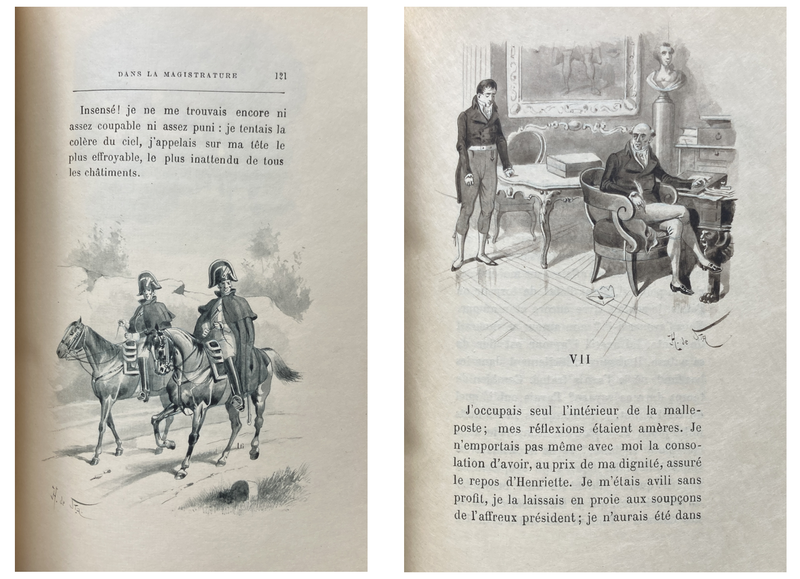
Extra-illustrated copies like this one were a fashion at the end of the 19th century among French bibliophiles, and publishers like Calmann Levy produced a limited number of copies on fine Japon vellum with especially large margins to give illustrators a greater canvas to work with. A list of other titles in the series appears on the back of the publisher’s wrapper.
The author Jules Sandeau (1811-1883) was a curator at the Mazarine Library, the author of numerous novels throughout the mid 19th century, and as a member of the Académie française (1858) he was solicited by Flaubert on behalf of Baudelaire's candidature for a seat among the immortels. Un Début dans la Magistrature is a later work. Sandeau co-wrote with George Sand Rose et Blanche (1831) under the pseudonym “J. Sand” from which Sand adapted her own nom de plume after their collaboration ended. Sandeau, who is less well remembered than George Sand, was nonetheless well enough respected in the years after his death to merit this deluxe bibliophile edition of this work.
